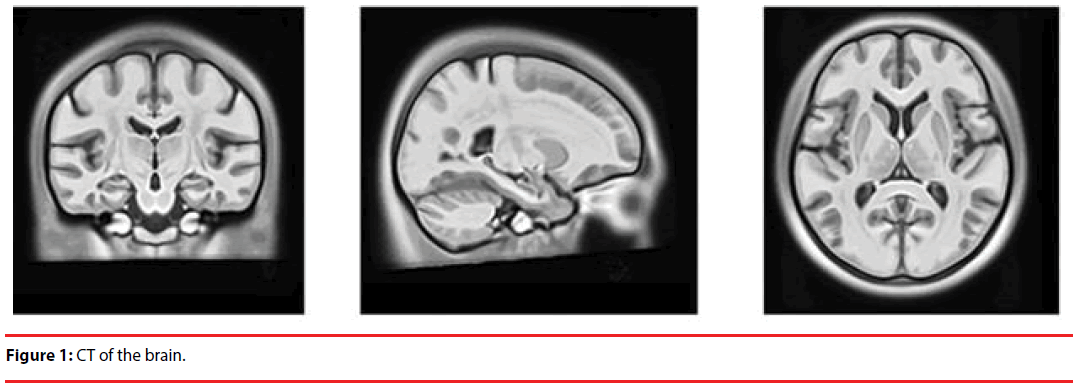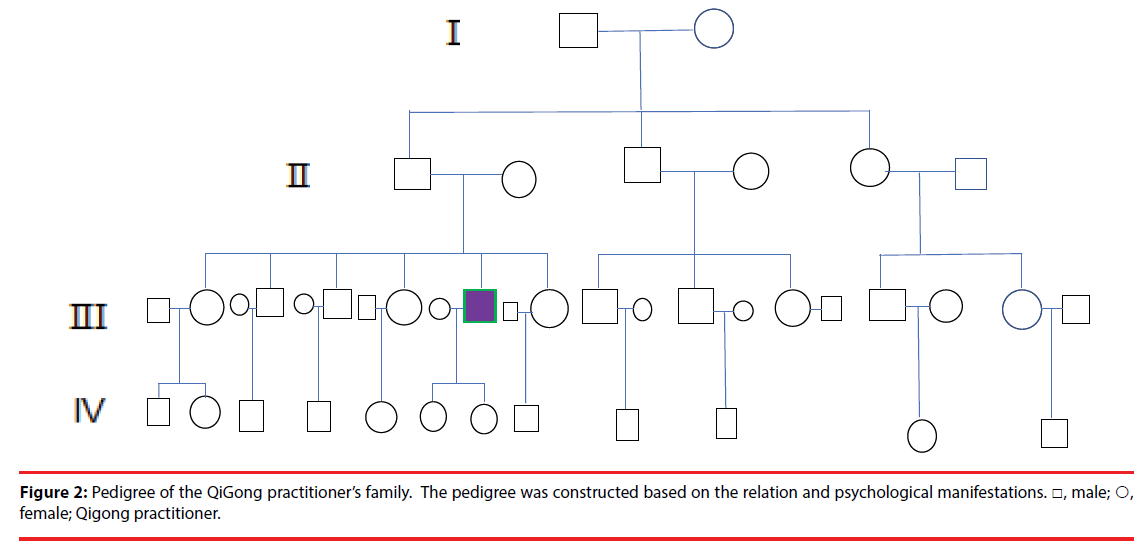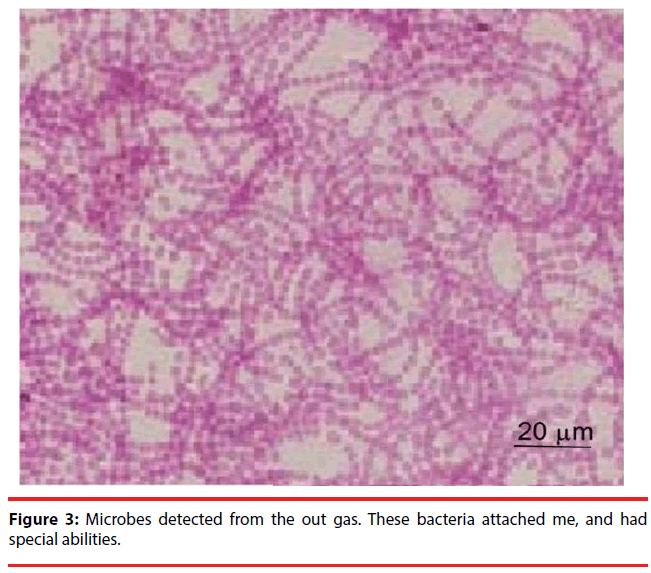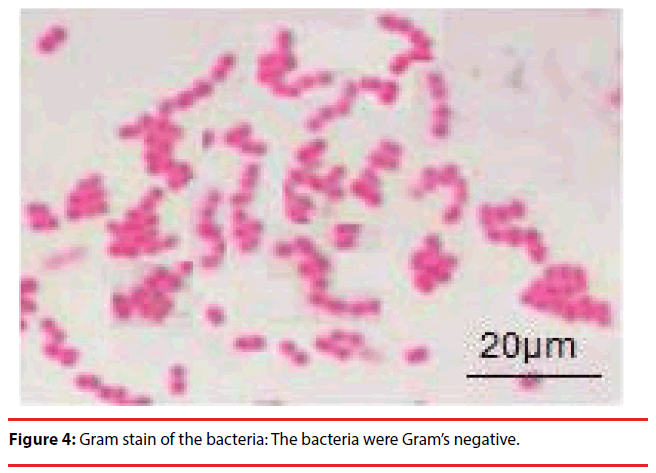Case Report - (2018) Volume 8, Issue 6
Auto-Bacteria Play a Causative Role in Human Depression: A Case Report
- Corresponding Author:
- Ming-Hua Fu, PhD
229 Brigadoon Drive, Hamilton, Ontario L9C 0B6, Canada
Tel: 1-905-389-6708
Abstract
The cause of depression is not clear. To find out the causative agent for depression, I, as a true case, combined the QiGong practice with clinical examination, laboratory tests and microbiology studies. In 1990, when I was 28 years old, and had practiced QiGong for one and a half years, I experienced sudden attack from the air and inside of my body at late night on my way to home. I saw shadows and images in the air, heard voices, and sensed pushing and forcing from inside. I handled the condition with QiGong method. In the hospital, X-ray examination of the internal organs, CT examination of my brain and laboratory tests showed I was physically normal. I sensed something could move in and out of my skin, stay in my body and try to influence my thinking and behaviors. There is no history of these manifestations in my family. Microbiology study revealed they were auto-bacteria, Staphylococcus gasomobilis, which were gram-negative and had special abilities and behaviors. I have treated the condition with QiGong for thirty years and I have been well. These results suggest that autobacteria play a causative role in human depression and other related mental disorders. It is urgent to develop effective strategies to prevent the bacteria from further damaging our life.
Keywords
Qigong, Auto-bacteria, Bacterium behaviors, Causative, Depression
Introduction
Major depression is one of most harmful mental diseases. It causes Canada to lose tens of billions of dollars each year. It is expected to become the second leading cause of disease burden globally by 2020 [1]. Though 80% of people with depression can be successfully treated, 60% of people with mental health issues do not seek help in Canada due to stigma [2]. Untreated clinical depression leads to severe problems including higher risk of suicide. Approximately 4000 Canadians take their own lives each year due to mental illness [2] while over one million people suicide each year due to major depression [3].
Psychotic depression occurs when a person has severe depression plus some form of psychosis, such as having disturbing false fixed beliefs (delusions) or hearing or seeing upsetting things that others cannot hear or see (hallucinations). The psychotic symptoms typically have a depressive “theme,” such as delusions of guilt, poverty, or illness [4]. Though there are quite a few effective treatments the disease often reoccur and could not be definitely cured [4-6].
Generally, depression is thought to be caused by genetic factors, physical status and environmental conditions [7]. However, genetic studies about depression are controversial and have not identified any single gene involved in depression [8]. The number of physical conditions and environmental conditions which have been related to depression are too many to be causative factors [9]. Studies have found that the pathogenesis mechanisms of depression may include stressor- and cytokine-induced alterations of neuroplasticity [10], hormonal and immunological abnormalities [11,12], alterations of the hypothalamic-pituitary-adrenal (HPA) axis [13], changes in neuroplasticity [14], changes in oxidative and nitrosative stress pathways [15,16], and alterations in the expression of genes involved in signal transduction pathways [17]. Among all these factors, alterations in the HPA axis and the inflammatory response play a core role in the pathogenesis of depression [18,19]. The dysfunction of these systems is largely thought to be a result of the activation of stress-related mechanisms [20]. Stress leads to both HPA axis hyperactivity and increased inflammation. As communication occurs between the CNS and the endocrine and immune systems, an activation of one can affect the processes of another, and vice versa [21].
However, these reported mechanisms still cannot explain: (1) why patients feel to be controlled or pushed by something; (2) why patients could see and hear something special; (3) why most patients present that they are attacked by evils. Only after the agents that control and push the patients, produce the sounds and images, or in patients’ word evils, are identified, these questions can be well answered and the mental disorders could be scientifically prevented and cured.
In this case report, I, based on my personal QiGong [22,23] experience, clinical laboratory examination and microbiology study, present some evidence that auto-bacteria are causative reagents in causing human mental disorders, especially depressions.
Case Report
I, for the sake of human health and life, am willing to honestly report my personal experience and related clinical examination data and laboratory research results. It was in 1990 when I was 28 years old and had been practicing QiGong [22,23] for one and a half years. It was 11:00 pm June 4, 1990, when I finished my work, left my laboratory and walked on the way to my sleeping room, suddenly, I saw things in the space around me flashing in white light, and heard sounds from the things in my native language “seek him, kill him, we are evils”. I was astonished, but I followed the QiGong instructions, cross your two hands in front of your heart, and quietly sit down to get into the state of QiGong [22,23]. They were conquered and did nothing harmful to my health. I went to hospital and told my physician what happened to me. A series of physical examinations were performed. X-ray examination showed that my internal organs, including lung, heart, liver, kidneys, and gastro-intestines, were normal. Computered tomography (CT) showed that there were no lesions in my brain (Figure 1). Laboratory examination results showed that I was in healthy state (Table 1). Pedigree analyses indicated that there was no history of the manifestations in my family (Figure 2). After that I strived to figure out what the evils really were. I laid a drop of 0.1% neutral red solution on a slide, and intentionally push the “gas” out of my finger into the dye solution. After observing under a light microscope, I found microbes moving in the dye. They were filamentary, composed of many cells (Figure 3). Gram staining showed that they were gram negative (Figure 4). rDNA identification showed that they were Staphylococcus bacteria [24].
| Parameters | Values | Normal Reference |
|---|---|---|
| aspartate transaminase (AST) | 20U/L | 15-40 U/L |
| alanine aminotransferase (ALT) | 25U/L | 9-50 U/L |
| r-glutamyl-transpeptidase (r-GGT) | 24U/L | 10-60U/L |
| alkaline phosphatase (ALP) | 70U/L | 45-125U/L |
| total bilirubin (TBIL) | 15 μmol/L | 6.8-30μmol/L |
| DBIL | 3 μmol/L | 0-8.6μmol/L |
| Hemoglobin | 150 g/L | 115-150g/L |
| Reticulocyte | 1% | 0.59%-2.07% |
| WBC | 7.0 x 109/L | |
| ESR | 10 mm/hr | 0-20 mm/hr |
| antinuclear antibody | Normal | |
| extractable nuclear antigen | Normal | |
| HAV, HBV, HCV, HEV | Negative | |
| Body weight | 62 kg | |
| Height | 1.70 m | |
| Age | 28 years old | |
| Body temperature | 37oC | |
| Blood pressure | 120 /75 mmHg | 130/90 mmHg |
Table 1: Demographic characteristics and laboratory test results.
Since then I have been well living for thirty years. Based on my QiGong ability [22,23] and personal observation, I found these microbes have the following abilities: (1), in addition to other sounds they can produce sounds same as human voices; (2) they can produce light and change colors, such as, transparent, black, white, red and blue; (3), they can automatically move in the air, penetrate into our body through skin, and move inside our body; (4), they can understand and use human language, mimic human voices, though the voice is not so loud; (5), they try to attack and scare people from both inside and outside of our body; (6), they cause emotions, push and force inside people to do illegal things; (7), they do not have acute toxicity effects on our health; (8), there seems to be immune tolerance.
Discussion
In this case report, I first in the world described my own QiGong experience [22,23], which showed the clinical manifestations, in many aspects similar to depression and other mental disorders. Microbiology study identified that Staphylococcus bacteria were involved. QiGong method [22,23] revealed several special abilities of the bacteria. These results suggest that autobacteria play a causative role in human depression and other mental disorders.
Though I have QiGong method to properly treat the condition, the clinical manifestations are similar to what a typical depression presents, such as, shadows in the air, noise and voice from the air and inside, lights, colorful images, pushing and forcing inside, and so on [4]. The normal clinical examination results including X-ray results, CT results and laboratory test results further support that my experience resembles very much depression [7]. However, I followed QiGong instruction and treated the condition with QiGong method but not with medication commonly prescribed by physicians for thirty years, and my wellbeing outcomes indicate that QiGong method works well [22,23].
Pedigree analysis result excluded the involvement of genetic factors in the manifestations, which is in agreement with the controversial state of the observations about the roles of genetic factors in depression [8]. The existence of Staphylococcus bacteria found in the QiGong gas [22,23] their color changing ability and auto-movement ability have been confirmed in my in vitro study [24-26]. These findings implicate that auto-bacteria play a causative role in human mental disorders, especially depression. The finding of Bacillus gasomobilis [24] and Pseudomonas gaso-mobilis (data not shown) suggest that there may be more auto bacteria involved in depression. Though many factors have been related to depression and other mental disorders no one could explain all the key clinical manifestations of depression. Among the factors related to depression [10-15], HPA hyperactivity due to over response to stressors has been proposed as a core connection among these factors with human brain and related depression symptoms [21]. However, the HPA theory could not explain how hormone changes could lead to the shadows, voice, images, pushing and forcing from inside sensed by the patients while the autobacteria’s abilities and behaviors could completely explain these phenomena. The auto-bacteria and their special abilities indicate that the threats over-responded by the patients are objectively present but not anything imagined out by the patients as proposed by the advancer of adrenalhypothalamus axis hormone change theory [21]. In addition, changes in HPA hormone levels may just be the outcomes of people’s response to the auto-bacteria’s threats [21]. Auto-bacteria play a causative role in initiation, progression and clinical key manifestations of depression. Suicide is not people’s self-killing but people killed by auto-bacteria.
Based on my personal QiGong experience [22,23], clinical examination, and laboratory studies, it is obviously that auto-bacteria can penetrate our skin into our bodies, stay in our bodies and execute some harmful effects on our body. The findings in this report indicate that the autobacteria could break our skin barrier, escape the recognition by our immune-system, and resist to our immune-system responses of bacteriakilling [27,28]. The skin penetration ability of the bacteria is due to their fine diameter [24], squeezable soft cell well (Gram negative, Figure 4) and auto-mobility [24]. Their hydrophilic surface, high solubility and suspension ability in water [24] may be additions to the mechanisms by which pathogens can escape the recognition and phagocytosis by phagocytes, and further resist our immune system’s defensive responses [27-30]. The air auto-movement ability of the bacteria enable them to get into our embryos during early development stages, kill the clones of B-cells responsible for production of immunity to the bacteria antigens, and result in our immune tolerance to them [31]. The auto-bacteria’s abilities of simulation of human voices, understanding and usage of human languages, and influence of human thinking and emotion are quite new to human knowledge about bacteria, which provide a good model for studying the mechanisms of thinking of human neurons. Usually, when the bacteria are transparent and quiet in the environment around us, and transparent, black or quiet inside of our body, people cannot sense their existence and take their influence on our emotion, thinking and behaviors as parts of our own brain functions. A single bacterium cell is too tiny to be sensed by human sensory organs. However, under some conditions, when the bacteria will massively and collectively become black, red, blue, and white, produce lights and voice, and show visible images or shadows, people will be able to sense their existence and vicious attacks on human bodies and harmful influences on human brains, emotions, thinking and behaviors, and response to them with scares and other unreasonable behaviors. Therefore, depending on circumstances, the interaction between human and the auto-bacteria will result in various statuses of our health and wellness, including health, illness, psychosis, mental disorders, crimes, violence or even death.
The current approved treatments for depression do not target the auto-bacteria and can only temporarily relieve the patients from the interference by the auto-bacteria through blocking the transit of nerve pulses [4-6]. It is very urgent for every country in the world to promote the studies about these bacteria and develop effective treatment strategies to prevent these bacteria from further damaging human life. The currently used antibiotics, such as penicillin, are not expected to be effective since these bacteria have acquired resistance to these medications [24]. Also the auto-movement ability and their free passage from our skins make the killed auto-bacteria in the body be able to be supplemented by the auto-bacteria outside of our body penetrating in. When designing and developing methods to treat auto-bacteria for depression patients it is not avoidable to consider about the auto-bacteria’s special abilities and behaviors.
In conclusion, a new kind of auto-bacterium was identified, which may play a causative role in human mental disorders, especially depression. This case study provides some clues from the point of auto-bacteria for further investigation about the etiological mechanisms of human depression. Effective strategies are urgent to be developed to cure human mental diseases and prevent these bacteria from damaging human life.
Competing Interests
No conflict of interest should be declared.
References
- World Health Organization: Mental Health: A Call for Action by World Health Ministers. Mental Health (2001).
- Canada MHC of: Making the Case for Investing in Mental Health in Canada (2016).
- Turecki G, Brent DA. Suicide and suicidal behaviour. Lancet 387(10024), 1227-1239 (2016).
- Rothschild AJ. Challenges in the treatment of major depressive disorder with psychotic features. Schizophr. Bull 39(4), 787–796 (2013).
- JM. HS, M.C. CB, M.F. ML, M.A. CN, S. AG, M. MC: Major depressive disorder with psychotic symptoms in elderly. A case report. Eur Psychiatry 2016;33:S531.
- Furuse T, Hashimoto K. Fluvoxamine monotherapy for psychotic depression: The potential role of sigma-1 receptors. Ann. Gen. Psychiatry 8(1), 1-3 (2009).
- Verduijn J, Milaneschi Y, Schoevers RA, et al. Pathophysiology of major depressive disorder: Mechanisms involved in etiology are not associated with clinical progression. Transl. Psychiatry 5(1), e649 (2015).
- Lohoff FW. Overview of the genetics of major depressive disorder. Curr. Psychiatry. Rep 12(6), 539-546 (2010).
- Woo J-M, Postolache TT. The impact of work environment on mood disorders and suicide: Evidence and implications. Int. J. Disabil. Hum. Dev 7(2), 185-200 (2008).
- Hayley S, Poulter MO, Merali Z, et al. The pathogenesis of clinical depression: Stressor- and cytokine-induced alterations of neuroplasticity. Neuroscience 135(3), 659-678 (2005).
- Dowlati Y, Herrmann N, Swardfager W, et al. A Meta-Analysis of Cytokines in Major Depression. Biol. Psychiatry 67(5), 446-457 (2010).
- Howren MB, Lamkin DM, Suls J. Associations of depression with c-reactive protein, IL-1, and IL-6: A meta-analysis. Psychosom. Med 71(2), 171-186 (2009).
- Pariante CM, Lightman SL. The HPA axis in major depression: classical theories and new developments. Trends. Neurosci 31(9), 464–468 (2008).
- Pittenger C, Duman RS. Stress, depression, and neuroplasticity: A convergence of mechanisms. Neuropsychopharmacology 33(1), 88-109 (2008).
- Maes M, Galecki P, Chang YS, et al. A review on the oxidative and nitrosative stress (O&NS) pathways in major depression and their possible contribution to the (neuro)degenerative processes in that illness. Prog. NeuroPsychopharmacology. Biol. Psychiatry 35(3), 676-692 (2011).
- Moylan S, Maes M, Wray NR, et al. The neuroprogressive nature of major depressive disorder: Pathways to disease evolution and resistance, and therapeutic implications. Mol. Psychiatry 18(5), 595-606 (2013).
- Hepgul N, Cattaneo A, Zunszain PA, et al. Depression pathogenesis and treatment: What can we learn from blood mRNA expression?. BMC. Med 11 (2013).
- Danese A, Moffitt TE, Pariante CM, et al. Elevated inflammation levels in depressed adults with a history of childhood maltreatment. Arch. Gen. Psychiatry 65(1), 409-416 (2008).
- Heim C, Newport DJ, Mletzko T, et al. The link between childhood trauma and depression: Insights from HPA axis studies in humans. Psychoneuroendocrinology 33(6), 693–710 (2008).
- Mazure CM, Bruce ML, Maciejewski PK, et al. Adverse life events and cognitive-personality characteristics in the prediction of major depression and antidepressant response. Am. J. Psychiatry 157(6), 896-903 (2000).
- Zunszain PA, Anacker C, Cattaneo A, et al. Glucocorticoids, cytokines and brain abnormalities in depression. Prog. NeuroPsychopharmacology. Biol. Psychiatry 35(1), 722–729 (2011).
- Xu Z. Dong Fang Shou Dao Wen guo. Beijing, Zhongguo ren min da xue chu ban she (1988).
- Zhao B. Sin Ming Fa sho Ming Zi. Beijing, Zong Jiao Wen Hua chu ban she (2013).
- Fu M-H. Re-Examination of Louis Pasteur’s S-Shaped Flask Experiment. World Acad Sci Eng Technol Int J. Nutr. Sci 7(9), 433-440 (2013).
- Fu M-H. F’s germ-a species of microbe which can be isolated from the air with an empty u-shaped tube; in : International Union of Microbiological societies IUMS CONGRESSES’96: Jerusalem, Israel (1996).
- Fu M-H: Re-examination of Louis Pasteur’s S-shaped flask experiment; in : 56th Annual Conference, Canadian Society of Microbiologists: London, Ontario, Canada (2006)
- Celli J, Finlay BB: Bacterial avoidance of phagocytosis. Trends. Microbiol 10(5), 232-237 (2002).
- Ko YP, Kuipers A, Freitag CM, et al. Phagocytosis Escape by a Staphylococcus aureus Protein That Connects Complement and Coagulation Proteins at the Bacterial Surface. PLoS. Pathog 9(12), 1-13 (2013).
- Sarantis H, Grinstein S. Subversion of phagocytosis for pathogen survival. Cell. Host. Microbe 12(1), 419-431 (2012).
- Minton K, Geng J, Sun X, et al. Review Subversion of Phagocytosis for Pathogen Survival. J. Infect. Dis 78(1), 419-431 (2015).
- Schwartz RH. Historical overview of immunological tolerance. Cold. Spring. Harb. Perspect. Biol 4(a006908), 1-15 (2012).



